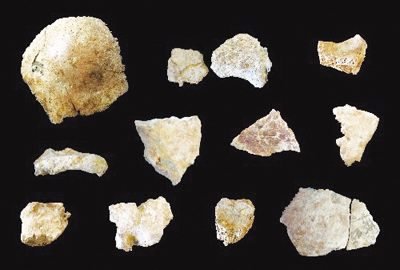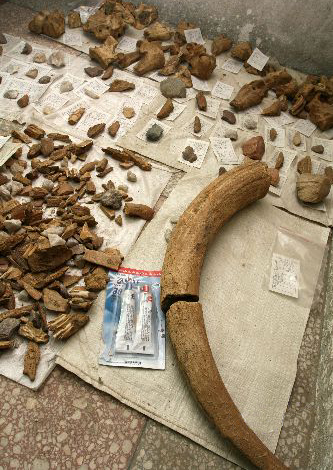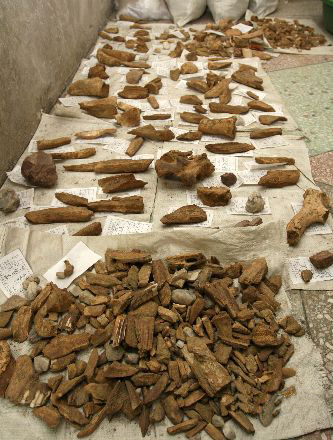On January 22 Chinese archaeologists announced that they found a nearly complete human skull fossil dating back about 100,000 years in Henan last month. The fossil may solve the mystery of the origins of the Chinese people.
The ancient skull was named "Xuchang Man" after the location, following the previous tradition of naming the Peking Man and Upper Cave Man. Scientists said that the discovery was expected to provide direct evidence for the origins of modern Chinese and East Asian human species, the China News Service reported.
The site, located 15 kilometers from Xuchang County, is a place known for large amount of animal fossils and stone artifacts found in 1965. In June 2005, after the groundwater at the Paleolithic location dried up, archaeologists started excavating the site again and unearthed about 30,000 more animal fossils and artifacts. On December 17, 2007, they found a fossil consisting of 16 pieces of a human skull with protruding eyebrows and a small forehead, which can be reconstructed as an intact human skull shape.
After the find, archaeologists brought the 16 fragments to the Chinese Academy of Sciences in Beijing. Dozens of respectable paleo-anthropologists examined the fossil with optically stimulated luminescence dating technology and reached consensus that the skull dates back 80,000 to 100,000 years, from the Late Pleistocene of the Quaternary in China.
Currently two theories on origins of homo sapiens species exist. Most paleo-anthropologists in the world believe that all modern humans descend primarily from African species dating back about 60,000 years. The theory asserts that Peking Man died out about 250,000 years ago in China, so the ancestors of modern Chinese came from Africa.
Another theory advocates multi-area evolution and interbreeding. Many Chinese scientists argued that regional continuity existed, with the most significant proof in their hands being Wushan Man (2 million years ago), Lantian Man (1.5 million years ago), Peking Man (250,000 - 500,000 years ago), Jinniu Man (100,000 - 200,000 years ago) and Upper Cave Man (10,000 - 40,000 years ago). These ancient men help to comprise evidence for a nearly complete evolutionary theory but lacked one important link: human fossils dating back 50,000 to 100,000 years. Now Xuchang Man will fill the blank.
The skull fragments are waiting for further studies and analysis, including possible DNA analysis.
Shan Jixiang, Director of the State Administration of Cultural Heritage, said the find would shed light on a critical period of human evolution and is the greatest discovery in China after the Peking Man and the Upper Cave Man skull fossils were found in Beijing early in the last century but lost during the War of Resistance against Japanese Aggression (1937-45).
Chinese scientists agreed and said that the skull has great potential value for study regarding the origins of modern Chinese and East Asian homo sapiens. It is the most important discovery since the Nanjing Homo erectus skull fossil was found 15 years ago.
(China.org.cn by Zhang Rui, January 29, 2008)






